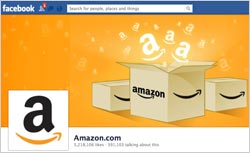
Figuring out the value of a “like” has confounded marketers as they try to determine the effectiveness of advertising on Facebook.
Does racking up fans on the social network translate into brand lift, increased intent to buy or higher sales?
A new study suggests that a “like” in itself doesn’t mean much.
It instead emphasizes the importance for brands of getting people who become fans on Facebook to keep coming back to their page after the initial like.
The study by research consulting firm Rubinson Partners and Compete found that among those who returned to a brand page within a month after
becoming a fan, there was a fourfold increase in their visits to a brand’s own Web site. If fans didn’t return, there was almost no increase in Web site visits.
advertisement
advertisement
The problem for
marketers and Facebook is that only a small fraction -- under 5% -- go back to a company’s Facebook page after “liking” it, according to the research. “What we found is getting
someone to become a fan of your page, and be exposed to earned impressions in the news feed, does virtually nothing for the brand, unless they go back to the fan page,” said Joel Rubinson,
president of Rubinson partners.
The firm’s study tracked people who became fans of 63 different brands on Facebook in February and March, as well as their activity in the month before
and after that period. The companies spanned three categories --retail, food and restaurants, and beauty -- and included brands such as Amazon, Wal-Mart and Domino’s Pizza.
Compete
correlated that data with Facebook users’ visits to those brands' own sites during that period through its panel of 2 million U.S. Internet users. If someone became a fan of Amazon on Facebook
in March and came back to its Facebook page at least once in April, it corresponded to fourfold increase in their trips to Amazon.com in that month.
“This is really dramatic because what
it says is if you get somebody to like your page on Facebook, your job is by no means done,” said Rubinson, former chief research officer for the Advertising Research Foundation. “You have
to get them to come back again.”
He says marketers are focused on things like driving up fan counts and earned media impressions at the expense of developing sustained engagement on their
Facebook pages. Companies send updates to fans’ news feeds that don’t often enough include a call to action or other reason to bring people back to their brand page, according to
Rubinson.
Facebook in recent months has encouraged marketers to combine paid and earned media efforts on the site to promote content on their brand pages to drive engagement. But posting
material that keeps fans interested over time has proven a challenge, especially for companies that don’t fall into the media or entertainment categories.
A joint study released by comScore and
Facebook earlier this week also emphasized the importance of driving fan interaction with brand page marketing. But it also suggested that people exposed to branded impressions alone on Facebook were
more likely to make offline and online purchases within four weeks of seeing those messages.
Still, Rubinson maintains that using Facebook as a means of sending fans to a company’s own
site is more desirable than counting on the quick hit of an ad impression. “The time spent on owned media is so much greater than glancing at a display ad or something that happens to show up in
their news feed,” he said.